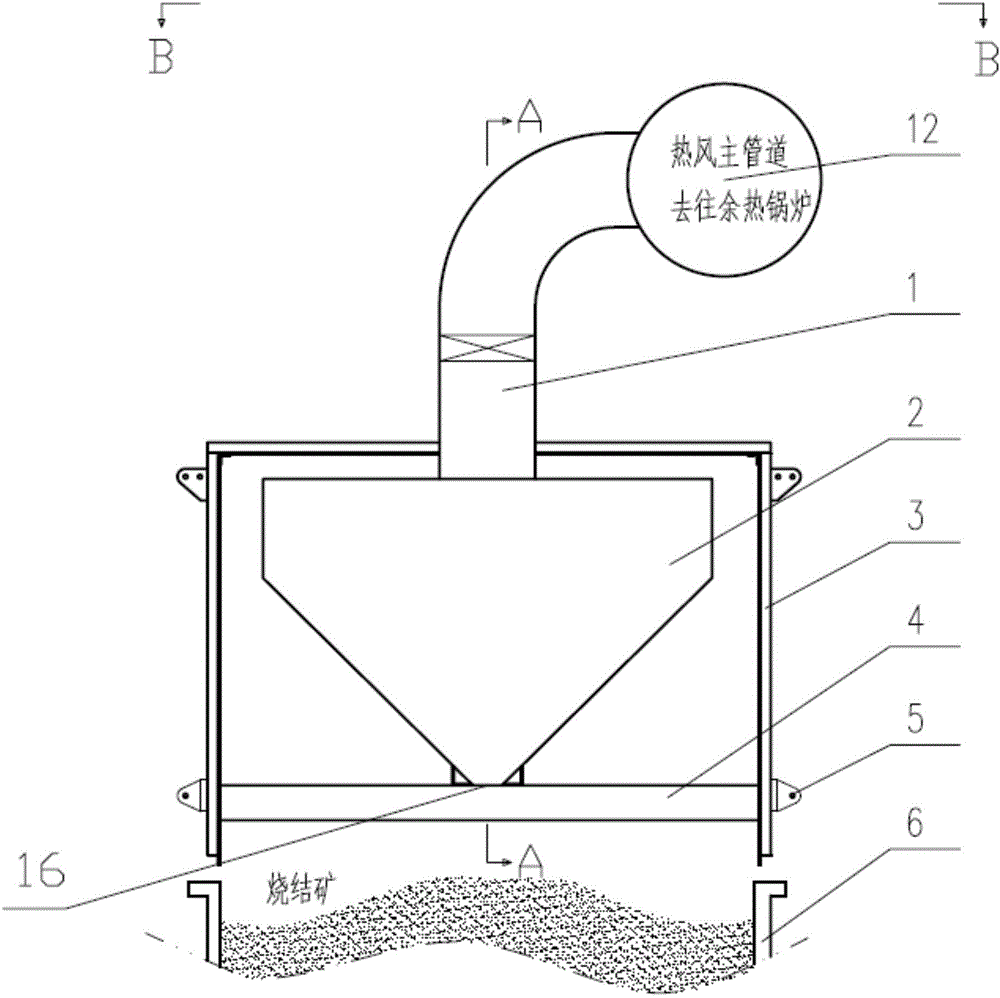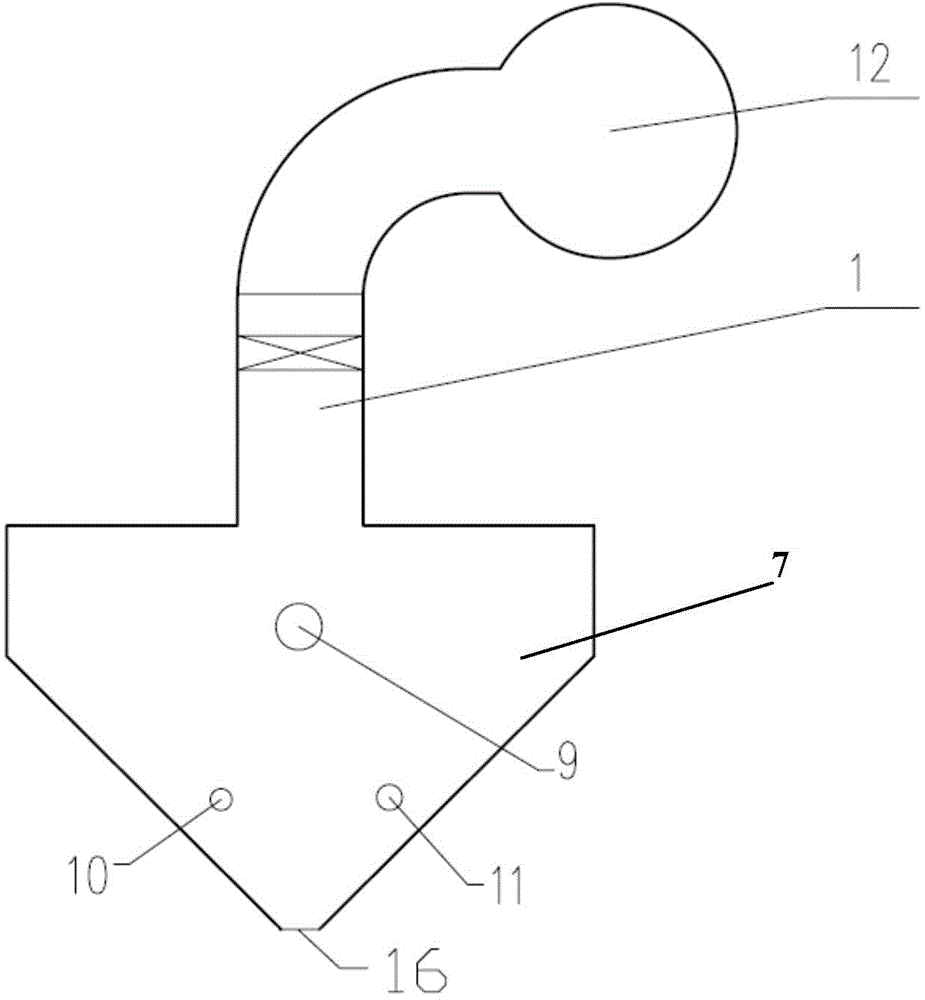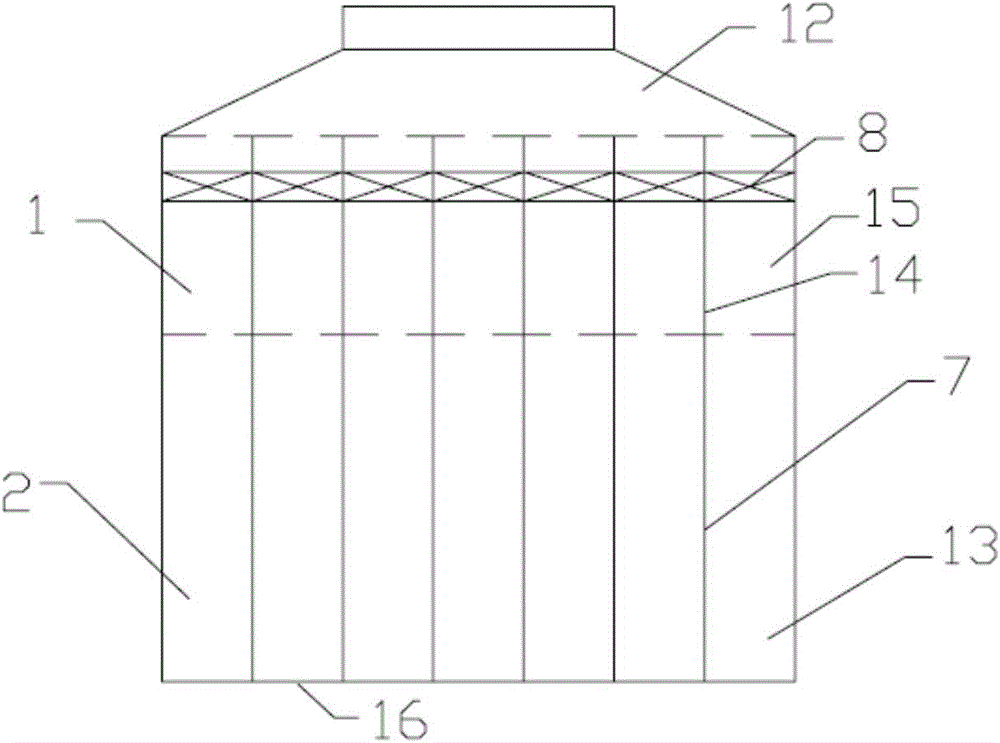Step-type self-sealing waste heat recovery system
A waste heat recovery system and self-sealing technology, applied in the field of waste heat recovery of flue gas, can solve the problems of reducing the taste of waste heat flue gas, excessive length-width ratio of hot air hood, affecting the performance of waste heat power station, etc. The effect of cooling air and improving the recovery rate of waste heat
- Summary
- Abstract
- Description
- Claims
- Application Information
AI Technical Summary
Problems solved by technology
Method used
Image
Examples
Embodiment 1
[0016] like figure 1 , figure 2 and image 3 As shown, the stepped self-sealing waste heat recovery system of this embodiment includes a hot blast cover 3 and a hot blast piping system 12. The hot blast piping system can be connected to the waste heat boiler, and the hot blast cover can cover the sintered ore of the sintering cooling trolley 6. There is also a built-in flue 2 inside the hot air hood, and a flue gas outlet 1 is arranged on the hot air hood. The built-in flue 2, the flue gas outlet 1 and the hot air piping system 12 are sequentially connected. For the long and narrow suction port 16 for extracting hot air, the built-in flue 2 is divided into several sub-built-in flues 13 by several flue partitions 7 along the length direction of the suction port, and the flue partition 7 is perpendicular to the length direction of the suction port 16 , the suction port is also divided into several sub-suction ports by the flue partition, and each sub-built-in flue has an inde...
PUM
 Login to View More
Login to View More Abstract
Description
Claims
Application Information
 Login to View More
Login to View More - R&D
- Intellectual Property
- Life Sciences
- Materials
- Tech Scout
- Unparalleled Data Quality
- Higher Quality Content
- 60% Fewer Hallucinations
Browse by: Latest US Patents, China's latest patents, Technical Efficacy Thesaurus, Application Domain, Technology Topic, Popular Technical Reports.
© 2025 PatSnap. All rights reserved.Legal|Privacy policy|Modern Slavery Act Transparency Statement|Sitemap|About US| Contact US: help@patsnap.com



